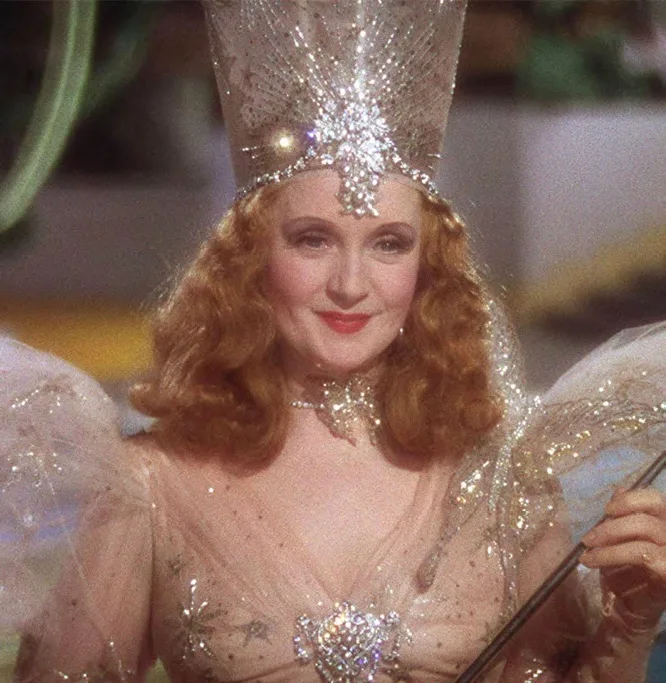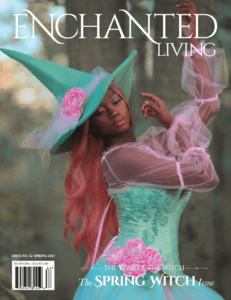Feature Image:
The Wizard of Oz 1939 MGM film with Billie Burke as Glinda the Good Witch of the North. Pictorial Press Ltd/Alamy Stock Photo
When you think of the good witch Glinda, you most likely picture a woman with red hair, an enormous, frothy pink dress, and a truly impressive amount of sparkles. You probably think of bubbles and magic wands, and—let’s face it—a slightly cloying voice. This image of the character, depicted by Billie Burke in the famous 1939 film The Wizard of Oz, has been cemented in Western consciousness as much as her counterpart, the mean, green Wicked Witch of the West. If you’re a fan of Broadway, you might also think of a calculating popular girl named Galinda with a secretly good heart in the 2003 musical Wicked, by Stephen Schwartz and Winnie Holzman, based loosely on Gregory Maguire’s 1995 novel.
But there’s a lot more to Glinda than these adaptations reveal. In L. Frank Baum’s original novels about the land of Oz (1900–20), Glinda is among the most powerful magic users there. One of her strongest gifts is the ability to control the weather (as hinted at in the 1939 film, when she summons snow to counteract the sleep of the poppies sent by the Wicked Witch of the West). She’s a wise ruler in her own right—of the country in the South of Oz, not the North—and she is a protector of Princess Ozma, the rightful ruler over all the countries of Oz. There are multiple allusions to her great age, though she consistently appears young. The red hair is there, but she’s usually described as wearing white, and she owns a workshop full of fascinating objects. (In fact, she’s a bit of a scientist!) One of those objects is the Great Book of Records that allows her to know everything that happens in Oz. While she is consistently called “good,” she is not averse to using her skills to threaten, coerce, and wage war when necessary. She even commands an army of all female soldiers.
Still, a witch that is, overall, shown to be an exceptionally good and kind character in a story was pretty revolutionary for the time that Baum was writing. Most of this characterization was due to the fact that the author modeled Glinda on his mother-in-law, Matilda Joslyn Gage. Gage, a suffragist and abolitionist, was—by all accounts—a formidable and impressive woman. She famously argued that the women called witches and burned at the stake were much more likely to have been doctors and scientists who threatened the status quo of men’s exclusivity in such positions. She believed that these women were branded as evil to prevent them from taking power away from men. The good witch was Baum’s tribute to her as a scientist and a sorceress.
And let’s not overlook the fact that setting Glinda up as a beautiful, kind, incredibly powerful witch probably scored Baum major points with his mother-in-law in reality!
In the books, it’s Glinda who most often saves the day. She is powerful, independent, and kind without being easy to take advantage of. She knows her own mind and makes her own choices. She is ruthless when she must be, though always in service of what she has determined to be the greater good. Her many years of rulership have meant that she has often pulled strings behind the scenes and shaped the world of Oz more than most know.
In 1852, Matilda Joslyn Gage gave a speech at the National Woman’s Rights Convention in which she argued passionately for the rights of women. She concluded with these words:
Work sows the seed:
Even the rock may yield its flower:
No lot so hard, but human power,
Exerted to one end and aim,
May conquer fate, and capture fame!
Press on!
Pause not in fear:
Preach no desponding, servile view—
What ever thou will’st thy will may do.
Work on, and win!
Shall light from nature’s depth arise,
And thou, whose mind can grasp the skies,
Sit down with fate, and idly rail!
No—onward! Let the Truth prevail!



































